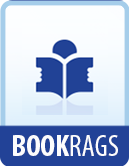Acquaintance quickly ripened into friendship, which
was not the less genuine or cordial because Jowett
had but a qualified esteem for Browning’s poems.
“Ought one to admire one’s friend’s
poetry?” was a difficult question of casuistry
which the Master of Balliol at one time proposed.
Much of Browning’s work appeared to him to be
“extravagant, perverse, topsy-turvy”;
“there is no rest in him,” Jowett wrote
with special reference to the poems “Christmas
Eve” and “Easter Day,” which he
regarded as Browning’s noblest work. But
for the man his admiration was deep-based and substantial.
After Browning’s first visit to him in June
1865, Jowett wrote that though getting too old to make,
as he supposed, new friends, he had—he
believed—made one. “It is impossible
to speak without enthusiasm of Mr Browning’s
open, generous nature and his great ability and knowledge.
I had no idea that there was a perfectly sensible
poet in the world, entirely free from vanity, jealousy,
or any other littleness, and thinking no more of himself
than any ordinary man. His great energy is very
remarkable, and his determination to make the most
of the remainder of life. Of personal objects
he seems to have none except the education of his
son."[95] Browning’s visits to Oxford and Cambridge
did not cease when he dropped away from the round of
visiting at country houses. He writes with frank
enjoyment of the almost interminable banquet given
at Balliol in the Lent Term, 1877, on the occasion
of the opening of the new Hall. Oxford conferred
upon him her D.C.L. in 1882, on which occasion a happy
undergraduate jester sent fluttering towards the new
Doctor’s head an appropriate allusion in the
form of a red cotton night-cap. The Cambridge
LL.D. was conferred in 1879. In 1871 he was elected
a Life Governor of the University of London.
In 1868 he was invited to stand, with the certainty
of election, for the Lord Rectorship of the University
of St Andrews, as successor to John Stuart Mill, an
honour which he declined.[96] The great event of this
year in the history of his authorship was the publication
in November and December of the first two volumes
of
The Ring and the Book. The two remaining
volumes followed in January and February 1869.
[Illustration: PIAZZA DI SAN LORENZO, FLORENCE,
WHERE “THE BOOK” WAS FOUND BY BROWNING.
From a photograph by ALINARI.]
In June 1860 Browning lighted, among the litter of
odds and ends exposed for sale in the Piazza San Lorenzo,
Florence, upon the “square old yellow book,”
part print, part manuscript, which contained the crude
fact from which his poem of the Franceschini murder
case was developed. The price was a lira, “eightpence
English just.” As he leaned by the fountain
and walked through street and street, he read, and
had mastered the contents before his foot was on the
threshold of Casa Guidi[97]. That night his brain
was a-work; pacing the terrace of Casa Guidi, while
from Felice church opposite came




